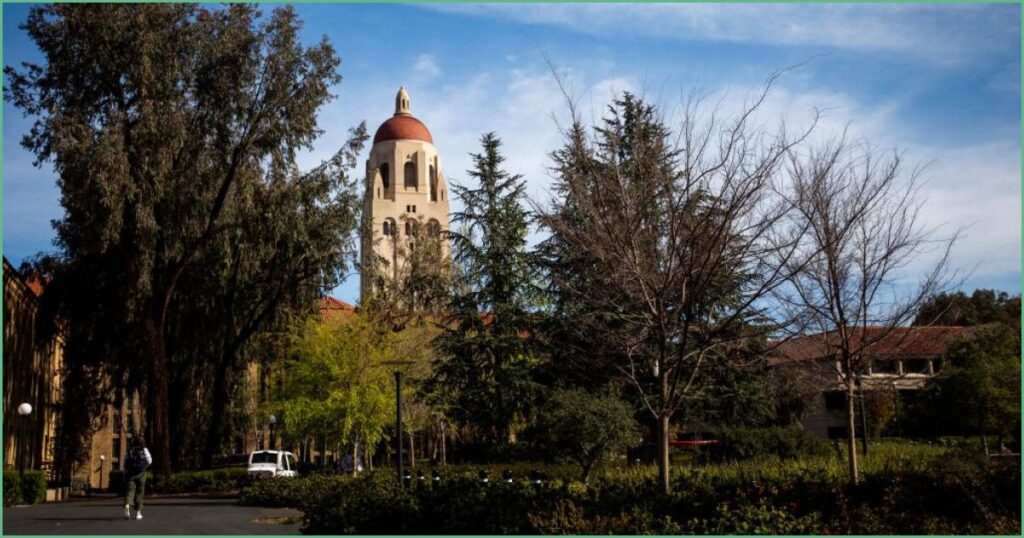Stanford Demonstrators Arraigned; Trial Set for November 17
Eleven people who took part in demonstrations at Stanford were arraigned in federal court on Monday, and the proceedings are now moving forward under close scrutiny. Three of the defendants were told to enter their pleas next week, a small detail that signals the court is treating each case on its own timeline. For conservatives watching, this is about more than a single campus clash; it is a test of whether the law will be applied evenly and whether institutions will stand for order.
The group includes eight students currently enrolled at Stanford, and their status as students raises immediate questions about campus culture and accountability. These are young people given enormous privilege, and their choices now could reshape their futures and the reputation of the university. Republicans will say that privilege should not mean immunity from consequences when federal charges are involved.
Being arraigned in federal court is serious and formal, and it sends a clear message that some protests cross lines that trigger federal involvement. Authorities don’t escalate to this level lightly, and when they do, the system expects to see the facts tested in open court. That process will force a public airing of what happened and who bore responsibility.
Three defendants entering pleas next week is a procedural note with practical weight, because plea decisions often reveal how defendants view the strength of the government’s case. Plea bargaining is a normal part of the federal system, but it also shows that the court will move methodically rather than rush to judgment. The American people deserve to see a fair process and an outcome that respects both order and justice.
The November 17 trial date gives all sides time to prepare, and it gives the campus community time to think through the consequences of civil unrest. For parents and taxpayers who fund universities, there’s a simple expectation: campuses should be safe places for learning, not battlegrounds used to advance aims by shutting down debate. That expectation is not radical; it is basic and should be insisted upon.
Universities, including Stanford, face a choice between enabling unbounded protest and enforcing clear rules that protect other students’ rights. Many on the right will argue that enforcement of campus rules is not censorship but protection for the rights of those who want to study and graduate. Leadership requires making those choices and being prepared to face backlash from activists who think consequences are a dirty word.
For the eight students involved, the coming months will be a test of judgment and responsibility. A criminal trial can have lasting effects beyond any sentence, affecting careers, educational opportunities, and future prospects. Republicans emphasize personal responsibility and will stress that actions have consequences, regardless of political motive.
Federal charges also raise questions about whether local handling would have been sufficient, and why a national level response became necessary. When behavior on campus implicates federal statutes, it suggests conduct that goes beyond a simple student protest and into territory that requires more robust enforcement. Observers who value order view that escalation as proof that ordinary campus remedies were inadequate.
The case will also put Stanford’s administration under the microscope, testing whether university officials acted to prevent or respond to the events that led to federal involvement. Critics will ask whether the administration protected students and staff or whether it allowed activists to set the agenda without clear limits. A transparent accounting from university leaders will be necessary to restore confidence.
Public reaction is likely to split, with activists insisting on moral urgency and defenders of law and order insisting on rules and consequence. Republicans will underscore that civil disobedience is a choice with trade-offs, and praising disruption without acknowledging costs is irresponsible. The country needs to have a clear conversation about what protest looks like in a free society where rights are balanced with responsibilities.
The legal timeline now moves from arraignment to discovery and preparation for trial, and each step will reveal more about motives and tactics. Evidence gathered and witness testimony will inform whether this group acted within the bounds of lawful protest or stepped into criminal conduct. For voters who care about campus conservatism and public safety, watching the facts emerge will be crucial.
Media coverage will play a big role in shaping the narrative, and both sides should expect sharp framing from partisan outlets. Republicans promoting law and order will argue that the focus should be on the rule of law and the protection of peaceful students. Opponents will emphasize grievances and cause, but those cannot replace accountability in a system that values equal justice.
Long-term implications may include stricter campus policies, greater federal involvement in certain protest cases, and renewed debates over free speech zones and disciplinary standards. Those policy discussions should be grounded in common sense, not in tolerating lawlessness under the banner of activism. The public should demand institutions that prioritize education and safety over spectacle.
For the students involved, legal outcomes will matter, but so will the reputational consequences that follow any conviction or plea. Employers, graduate programs, and peers will react based on public record and court findings, and reputational damage can last longer than any sentence. Republicans will argue that accountability is essential for rebuilding trust.
The November 17 trial is a date to watch, because it will crystallize how the justice system responds to campus unrest that moves into federal territory. Until then, pleas, motions, and discovery will shape the case, and university officials will face pressure to explain their role. This episode should remind leaders at all levels that order and liberty go hand in hand, and one cannot thrive without the other.
n
h/t: Just The News
n
